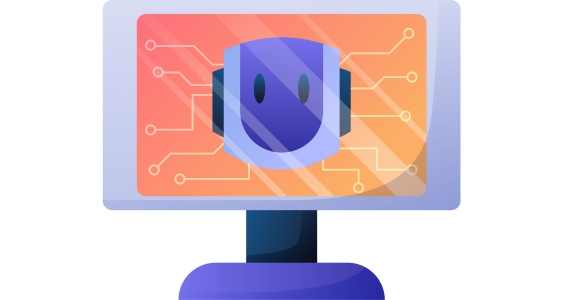Embedded firmware is the soul of countless modern devices, from simple household appliances to complex industrial machines. Unlike general-purpose software, firmware is specialized software closely tied to hardware, providing the essential instructions for how the device operates.
Embedded firmware development, therefore, bridges the gap between hardware capabilities and software functionality, enabling devices to perform their designated tasks effectively.
This development process encompasses designing, implementing, testing, and maintaining software that resides on dedicated hardware, often with specific, non-general-purpose computing constraints.
The rise of the Internet of Things (IoT), smart technologies, and increased demand for interconnected devices has catapulted embedded firmware development into a critical component of technological advancement.
Key Components of Embedded Firmware Development Services
Hardware-Software Integration: A cornerstone of firmware development is the seamless integration between the software and its underlying hardware. This requires a deep understanding of hardware capabilities, including processors, memory, and input/output interfaces, to optimize software performance and functionality.
Custom Software Development: Tailored software solutions are essential in firmware development to meet unique device requirements. This includes custom operating systems, drivers, and application software that can efficiently utilize the limited resources of embedded systems.
Firmware Updatability and Security: With the increasing threats of cyberattacks, firmware must not only be secure from inception but also capable of being updated to address new vulnerabilities. This requires robust mechanisms for secure firmware updating, often over-the-air (OTA), without compromising device integrity or functionality.
Testing and Quality Assurance: Rigorous testing is paramount in embedded firmware development to ensure reliability, performance, and safety. This includes unit testing, integration testing, and system testing, often involving specialized simulation tools to emulate real-world operating conditions.

Challenges in Embedded Firmware Development
Hardware Constraints and Optimization: Embedded systems often operate with limited resources, such as processing power, memory, and energy. Developers must expertly optimize firmware to maximize performance while minimizing resource consumption, a task that requires both creativity and technical prowess.
Security Concerns: As devices become more connected, they also become targets for cyberattacks. Ensuring firmware is secure against potential threats is an ongoing challenge that necessitates constant vigilance and updates.
Cross-Platform Compatibility: Many embedded devices must communicate with other systems, requiring firmware to be compatible across different platforms and technologies. This adds a layer of complexity in development, demanding expertise in various communication protocols and standards.
Real-Time Performance Requirements: Some embedded systems, especially in critical applications like medical devices or automotive control systems, must meet stringent real-time performance criteria. Achieving this requires precise timing and synchronization, challenging developers to balance functionality with performance constraints.
Emerging Trends in Embedded Firmware Development
IoT and Connectivity: The expansion of IoT has led to increased demands for firmware that can manage not only device operations but also network connectivity, data collection, and analysis. This trend pushes developers to incorporate wireless communication capabilities and robust data handling functionalities into the firmware.
AI and Machine Learning Integration: Integrating artificial intelligence (AI) and machine learning (ML) algorithms into embedded systems is becoming more prevalent. This allows devices to learn from data, improve performance over time, and make autonomous decisions, opening new possibilities in smart appliances, industrial automation, and beyond.
Energy Efficiency and Green Technology: As the global focus shifts towards sustainability, there’s a growing demand for embedded systems that consume less power. Developers are innovating ways to create firmware that maximizes energy efficiency, contributing to the development of greener technologies.
Edge Computing: To reduce latency and bandwidth usage in networked devices, edge computing processes data locally, closer to where it’s generated. This trend requires firmware developers to embed more complex processing and analysis capabilities directly into devices, decentralizing data processing from the cloud to the edge.
Selecting an Embedded Firmware Development Service
Choosing the right embedded firmware development service is crucial for project success. Factors to consider include the service provider’s experience in your industry, technical expertise, and portfolio of past projects.

Client feedback and case studies can offer insights into their ability to deliver high-quality, reliable firmware solutions.
Additionally, post-development support and maintenance are vital, as firmware often requires updates and optimizations post-deployment to ensure continued performance and security.
Collaboration with a development service that offers comprehensive support ensures your embedded system remains robust and efficient over its lifecycle.
Future of Embedded Firmware Development
The future of embedded firmware development is poised for remarkable growth, fueled by advances in IoT, AI, and green technologies. As devices become smarter and more interconnected, the complexity and scope of firmware development will expand, requiring developers to continuously adapt and innovate.
The integration of advanced analytics, real-time processing capabilities, and enhanced security measures will define the next generation of embedded systems.
Staying ahead in this dynamic field demands a commitment to ongoing learning, flexibility, and embracing new technologies, ensuring that embedded systems will continue to play a pivotal role in shaping the future of technology.
Conclusion
Embedded firmware development services are at the heart of technological innovation, enabling devices to perform complex tasks reliably and efficiently.
As we’ve explored, selecting the right development service is essential, with considerations for experience, expertise, and support playing a pivotal role.
The challenges and trends highlighted underscore the dynamic nature of this field, pointing towards a future rich with advancements and opportunities.
For businesses and developers alike, staying informed and adaptable is key to harnessing the full potential of embedded firmware development, driving forward the next wave of technological progress.
See Also: UAE Researchers At NYU Develop Secure 6G Wireless Communications










